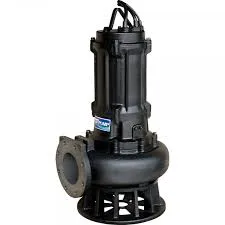Khmer
- Afrikaans
- Albanian
- Amharic
- Arabic
- Armenian
- Azerbaijani
- Basque
- Belarusian
- Bengali
- Bosnian
- Bulgarian
- Catalan
- Cebuano
- Corsican
- Croatian
- Czech
- Danish
- Dutch
- English
- Esperanto
- Estonian
- Finnish
- French
- Frisian
- Galician
- Georgian
- German
- Greek
- Gujarati
- Haitian Creole
- hausa
- hawaiian
- Hebrew
- Hindi
- Miao
- Hungarian
- Icelandic
- igbo
- Indonesian
- irish
- Italian
- Japanese
- Javanese
- Kannada
- kazakh
- Khmer
- Rwandese
- Korean
- Kurdish
- Kyrgyz
- Lao
- Latin
- Latvian
- Lithuanian
- Luxembourgish
- Macedonian
- Malgashi
- Malay
- Malayalam
- Maltese
- Maori
- Marathi
- Mongolian
- Myanmar
- Nepali
- Norwegian
- Norwegian
- Occitan
- Pashto
- Persian
- Polish
- Portuguese
- Punjabi
- Romanian
- Russian
- Samoan
- Scottish Gaelic
- Serbian
- Sesotho
- Shona
- Sindhi
- Sinhala
- Slovak
- Slovenian
- Somali
- Spanish
- Sundanese
- Swahili
- Swedish
- Tagalog
- Tajik
- Tamil
- Tatar
- Telugu
- Thai
- Turkish
- Turkmen
- Ukrainian
- Urdu
- Uighur
- Uzbek
- Vietnamese
- Welsh
- Bantu
- Yiddish
- Yoruba
- Zulu
Telephone: +86 13120555503
Email: frank@cypump.com
ធ្នូ . 10, 2024 23:50 Back to list
Design Considerations for Efficient Pipeline Pump Station Systems and Infrastructure
Pipeline Pump Station Design An Overview
Pipeline pump stations are critical components in the transportation of fluids, whether for water supply, wastewater management, or oil and gas distribution. The design of these facilities requires careful consideration of hydraulic performance, structural integrity, and environmental impact. This article outlines the key aspects involved in designing an effective pipeline pump station.
1. Understanding the Purpose
The primary function of a pump station is to manage fluid flow in a pipeline system. It boosts the pressure to ensure that the fluid can travel long distances or reach higher elevations. This necessity arises in various industries, such as municipal water supply systems, industrial processes, and energy transfer systems. Recognizing the specific needs of each application is crucial for effective pump station design.
2. Hydraulic Design
The hydraulic performance is the backbone of pump station design. Engineers must evaluate flow rates, pressure requirements, and the characteristics of the fluid being transported. Computational Fluid Dynamics (CFD) simulations are often employed to predict flow behavior and optimize the layout of pipes and pumps. Key factors include
- Flow Rate Determining the required flow rate based on demand assessments. - Pump Selection Choosing the right type and size of pumps, commonly centrifugal or positive displacement pumps, ensures efficient operation. - Piping System Designing the layout of pipes to minimize losses due to friction and turbulence is essential for maintaining the desired pressure.
3. Structural Design
Structural considerations are paramount to accommodate the pumps and ancillary equipment. The design must account for
- Foundation A stable and durable foundation is crucial, especially in areas with poor soil conditions or seismic activities. - Building Design The pump station should have a suitable structure to house the equipment. This includes space for maintenance, access for personnel, and consideration of noise and vibration mitigation.
pipeline pump station design

4. Mechanical and Electrical Systems
The integration of mechanical and electrical systems is vital for the operation of pump stations. Components to consider include
- Control Systems Automated control systems enhance operational efficiency by monitoring flow rates, pressure levels, and equipment performance. - Power Supply The design must incorporate a reliable power supply, including backups to ensure continuous operation during outages.
5. Environmental Considerations
Environmental impact is a critical factor in the design process. Engineers must ensure compliance with regulations and strive to minimize negative effects on surrounding ecosystems. This often involves
- Pollution Control Implementing measures to contain spills or leaks, such as containment basins. - Noise and Vibration Reduction Using sound-insulating materials and vibration-dampening technologies to mitigate disturbances to nearby communities and wildlife.
6. Safety and Regulatory Compliance
Safety is paramount in the design of a pipeline pump station. Comprehensive risk assessments must be conducted to identify potential hazards. The design should comply with relevant industry standards and local regulations, including those related to occupational safety and environmental protection.
Conclusion
Designing an effective pipeline pump station is a multi-faceted challenge that demands a thorough understanding of hydraulic dynamics, structural integrity, and environmental stewardship. By carefully considering these elements, engineers can create robust pump stations that ensure efficient fluid transportation while minimizing environmental impact. As technology advances and best practices evolve, the focus on designing sustainable and resilient pump stations will continue to grow, supporting the increasing demand for efficient resource management globally.
-
ISG Series Vertical Pipeline Pump - Chi Yuan Pumps Co., LTD.|High Efficiency, Energy Saving, Low Noise
NewsJul.30,2025
-
ISG Series Vertical Pipeline Pump- Chi Yuan Pumps|High Efficiency&Low Noise
NewsJul.30,2025
-
ISG Series Vertical Pipeline Pump-Chi Yuan Pumps Co., LTD.|High Efficiency&Energy Conservation
NewsJul.30,2025
-
ISG Series Vertical Pipeline Pump - Chi Yuan Pumps Co., LTD.|Advanced Hydraulic Design&Energy-Efficient Solutions
NewsJul.30,2025
-
ISG Series Vertical Pipeline Pump - Chi Yuan Pumps Co., LTD.
NewsJul.30,2025
-
ISG Series Vertical Pipeline Pump - Chi Yuan Pumps Co., LTD.|energy-efficient fluid handling&industrial durability
NewsJul.30,2025










